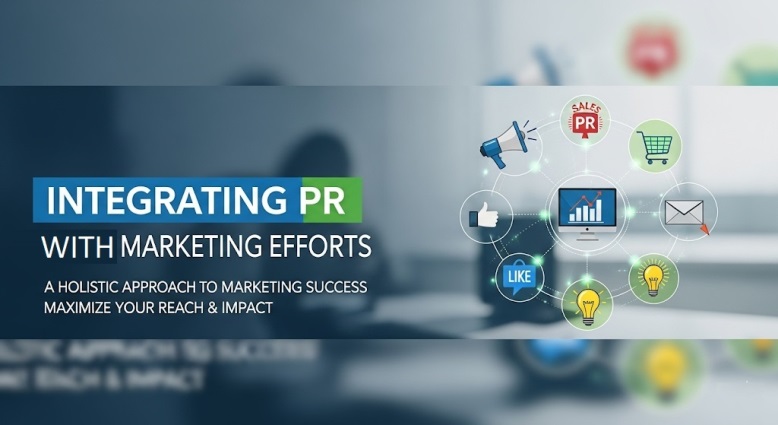
In today’s fast-paced tech world, combining public relations (PR) with smart business growth tactics is no longer optional—it’s essential. With competition increasing daily, businesses need to not only build awareness, but also translate that awareness into credibility, trust, and revenue. In this post, we’ll explore proven strategies for tech PR, backed by research, plus growth tips you can apply now.
What Makes Tech PR Different
Tech PR isn’t just about sending press releases or getting media coverage. It’s about:
- Communicating complexity clearly: Many tech products are built on complex ideas. Explaining them simply to both industry experts and average users is crucial.
- Speed & innovation: Technologies evolve fast. PR must move in sync—launching announcements, responding to trends, and being timely.
- Trust & credibility: In sectors like AI, cybersecurity, or SaaS, users and investors want proof—not just promises. Case studies, data, thought leadership all help.
Key Trends Shaping Tech PR & Growth Today

To grow in 2025 and beyond, tech companies are adapting to several important trends:
- Data-driven insights: PR strategies are increasingly dependent on analytics. Measuring reach, sentiment, and outcomes isn’t optional—it’s expected. (cision.com)
- Authenticity: Audiences can tell when brands are inauthentic. Authentic storytelling—sharing both successes and challenges—builds deeper trust. (MarketingProfs)
- Thought leadership & expert positioning: Leaders who publish insights, participate in panels, or write bylines establish their companies as innovators. (PRLab | B2B Tech PR Agency)
- Multi-channel media engagement: Tech PR isn’t just about press. Podcasts, blogs, social media, niche tech outlets—all are in play. (PRLab | B2B Tech PR Agency)
Top Tech PR Strategies to Boost Business Growth
Here are actionable strategies, drawn from recent high-ranking tech PR resources, that tech businesses should use.
1. Define a Strong Brand Narrative
A brand narrative is more than a logo or tagline. It includes your mission, values, what problem you solve, and why your solution is different. When people see your story repeated—on your website, in instrumentation of PR, in media interviews—they start to believe in your consistency and purpose.
2. Know Your Audience & Persona Targeting

Effective PR starts with knowing who you are speaking to. Who buys your product? Which journalists or media outlets cover your space? What forums, podcasts, events matter to your field? Segmenting your audience into personas will let you tailor messages, avoid generic content, and improve your media pitch success rates. (BMV)
3. Use Data to Inform & Measure Everything
- Monitor your metrics: reach, media impressions, sentiment, leads generated.
- Use analytics tools to see what types of stories/themes perform best.
- Adjust strategy based on what the data tells you. Not sure where to start? Even simple tools like Google Analytics, social listening, or PR monitoring platforms work. Studies show that most comms teams now rely on data for refining strategies. (cision.com)
4. Thought Leadership & Executive Visibility
Let your company’s leadership shine. When leaders speak or write on industry trends (e.g. AI, cybersecurity, software innovation), it boosts credibility. It also opens doors to media coverage, partnership opportunities, and investor interest. Use bylines, guest posts, webinars, or speaking slots.
5. Integrate PR with Other Marketing Efforts

PR doesn’t exist in a silo. When you align PR with content marketing, SEO, product launches, social media, customer support, and sales, the effect compounds. For example:
- Use keywords drawn from PR themes in your blog and SEO content.
- Amplify media coverage through social media.
- Use customer stories & case studies that come out of PR for marketing materials.
6. Prepare for Crises & Maintain Reputation
Even the best tech firms can face setbacks. A data breach, malfunction, negative feedback—these are risks. Having a crisis communication plan ready, being transparent, and responding quickly can minimize damage. Maintaining consistent reputation management is central. (engagepr.com)
Also Read: How to turn off vanish mode on Instagram with 5 Quick Steps
Business Growth Tips Aligned with PR
To ensure that your PR efforts translate into real business growth, pair them with these complementary growth practices:
- Upgrade your product messaging regularly: As your product evolves, ensure messaging stays up-to-date and reflects what customers care about.
- Leverage partnerships & collaborations: Co-marketing with complementary brands, guest posts, or joint webinars can multiply visibility.
- Make customer experience a part of your PR story: Happy customers, testimonials, success stories—they all add credibility and can be part of PR content.
- Invest in technology & tools: Automation for media monitoring, social scheduling, PR outreach tools, and even AI assistants to draft pitches can save time and improve consistency.
Examples of Success
While every company is different, here are real applications of these strategies:
- A B2B SaaS startup used thought leadership piece series in niche tech outlets, doubling their email leads in three months.
- A mid-sized AI software firm prioritized data-driven insights and redesigned messaging; they improved media mentions in top-tier tech blogs by 40%.
- A cybersecurity startup prepared a crisis communication plan ahead of an anticipated industry regulation change; when news hit, they responded quickly and maintained customer trust.
Conclusion
businessnewstips.com Latest Tech PR & Business Growth Tips are not one-off hacks—they are about building a consistent, authentic narrative, measuring what matters, and aligning all parts of your company around being visible and trustworthy. By defining your story, knowing your audience, integrating data, elevating leadership, and preparing for risk, your tech business can grow its brand, reputation, and bottom line.
FAQs
Q1: How long does it take for Tech PR strategies to show results?
It varies. Some tactics like media outreach or thought leadership may start showing traction in 3–6 months. Others, such as reputation building or large influencer partnerships, may take longer (6–12 months). Consistency matters more than speed.
Q2: Can small tech startups with limited budgets still leverage effective PR?
Absolutely. Startups can focus on low-cost, high-impact tactics: writing thought leadership or insight pieces, using social media, collaborating with influencers, or sharing customer success stories. Smart targeting and good storytelling can outperform big budgets.
Q3: What makes a press release effective in tech PR?
An effective press release is clear on what problem the tech solves, highlights unique innovation or data (if available), includes quotes from leadership or customers, targets relevant media outlets, and includes a call to action. It should also be well-timed to news cycles or product updates.



